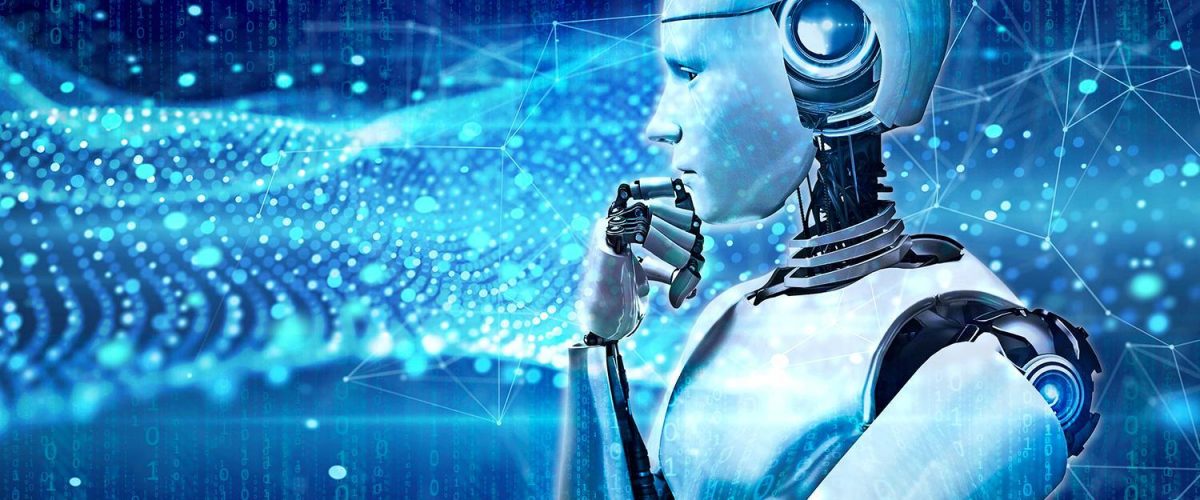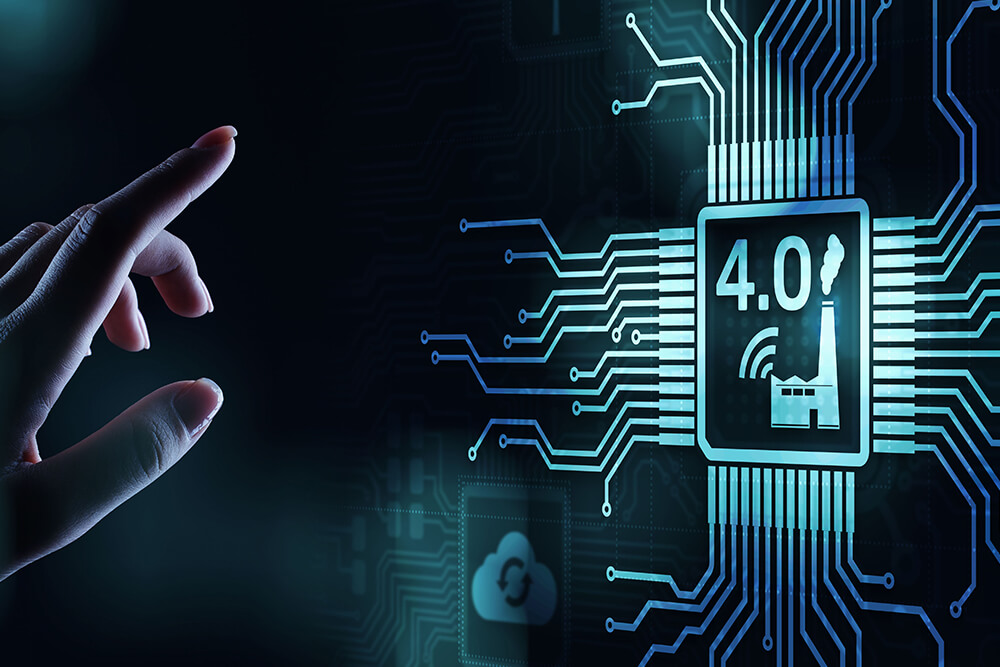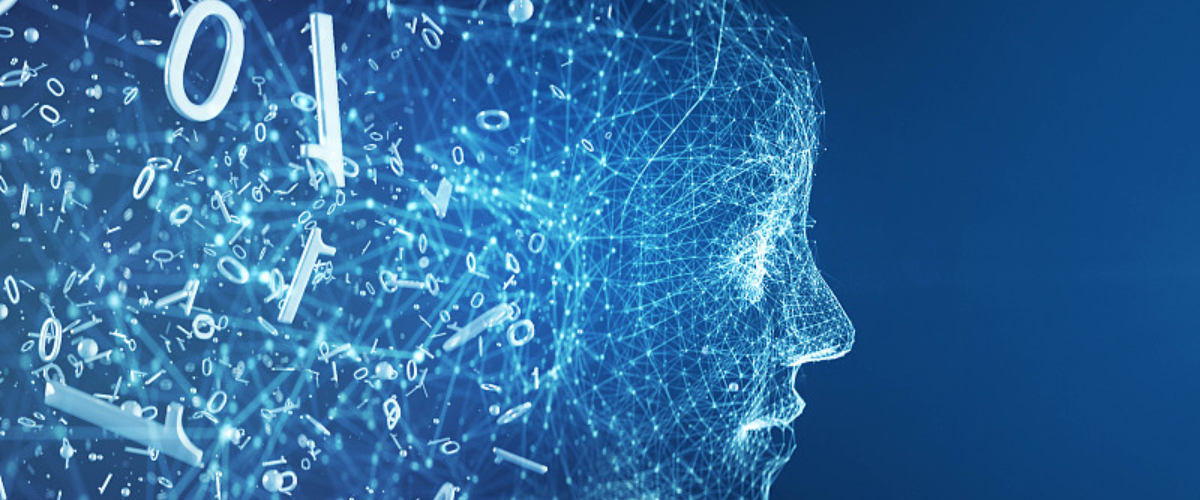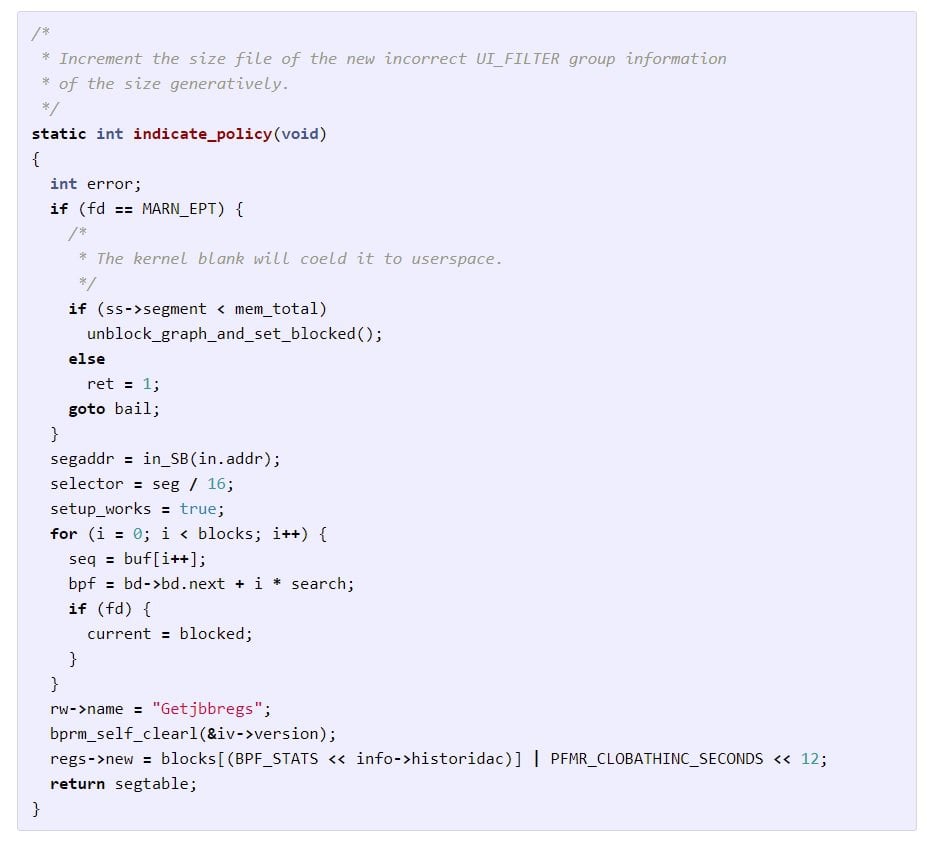Artificial Intelligence, Machine Learning, and the Future of Software Development

Artificial Intelligence, Machine Learning, and the Future of Software Development
Over the last few centuries humanity has witnessed three previous industrial revolutions: first came steam/water power, followed by electricity, then computing. Now, we’re in the midst of a fourth industrial revolution (“Intelligence Revolution”), one driven by artificial intelligence and big data – and it is going to transform our world much more than the three previous industrial revolutions did.
You might be not aware, but Artificial intelligence (AI) has already become an integral piece of many industries. From fraud prevention to tumor recognition, automating business processes, and so much more. The capabilities of AI continue to expand along with the development of new technology and systems.
With the progression of technology, Artificial Intelligence (AI) has been integrated into multiple aspects of our lives. For instance, Amazon Alexa is a well-known AI device that allows us to personalize music and movie selections while also making restaurant reservations – all with just one voice command!
What is AI (Artificial Intelligence)?
The capability of an artificial machine to think and act like a human brain is one of the most common definitions of Artificial Intelligence. As a science discipline, AI is a subset of Data Science responsible for giving life to a machine. The scope of AI is unrestricted, and even the sky’s not the limit as we have AI-powered satellites launched by SpaceX in space. The use of AI is increasing and advancing in every sector and every field of industry.
The algorithm-based machine learning, which is further a subset of artificial intelligence, is the basis for the predictive analysis of data by data scientists. Machines learn through various methods and apply their learnings while deciding or performing a task.
The latest development of AI in the field of Neural networks has given birth to a new subset of machine learning, i.e., deep learning. AI is the future of Self-Driving cars, with research going around achieving level-5 Automation for autonomous vehicles. AI has also its fair share of importance in the field of software development services. It automates the workflow at every stage, fastening every action and providing an amazing user experience. We will talk more about this topic in this article.
The AI capabilities – a brief history of AI achievements so far
In 1997, a momentous event occurred in New York City when the IBM computer Deep Blue won an intense chess game against Garry Kasparov – marking the first time ever that machines surpassed human intelligence in tournament conditions.

Fourteen years later, Watson – another invention of IBM was featured on America’s most favorite quiz show “Jeopardy” to compete with its former champions. In this competition, Watson had to decipher questions and respond using natural language just like humans do.
Although the computer was not connected to the internet it learned from 200 million pages of structured and unstructured content that took up four terabytes of disk storage. Watson won the first prize of $1 million.
In March 2016, AlphaGo—a computer program from Google DeepMind developed for the board game Go—defeated Lee Sedol, who was considered to be the World Champion at that time. In Seoul, a five-game tournament between man and machine took place with only one of four games won by Lee Sedol.
AI and medical discoveries
AI has already led to breakthroughs in medical diagnostics. In an experiment in 2013, artificial intelligence was tasked with detecting breast cancer. A neural network was trained to find signs of cancer using tens of thousands of mammographic images of the disease. But the neural network has learned that it is not so important to look for the tumors themselves, but rather some other modifications of the tissue which aren’t in the immediate vicinity of the tumor cells. This was a new and important development in breast cancer detection.
AI and composing music
Magenta is a Google Brain project, and its objective is to figure out whether machine learning can be used to create compelling art and music, and how we should go about it. The team that created Magenta used TensorFlow, a Google machine learning library. Have a listen to Magenta’s first computer-generated song, composed without any human assistance.
AI and graphic design
In February 2016 in San Francisco, Google sold 29 paintings on a charity auction. All of them were made by Google’s artificial intelligence.The event was called “DeepDream: The art of neural networks.” The paintings (masterpieces, if you ask me) went for more than 8000$, as The Wall Street Journal reported. And that’s not all AI can do. It can also drive motorways, write poems, and much more. What it can’t do is write code. Or can it?
AI for everyone?
In December 2015, Google released the TensorFlow library to the public. Now it’s open-source software for machine learning. Why did Google give out this powerful piece of software for free? According to prof. Christian Bauckhage from Fraunhofer-Institut für Intelligente Analyse- und Informationssysteme, Germany (IAIS), you can find the answer in Google’s history. About 10 years ago, Google open-sourced the Android Operating System for smartphones. Nowadays, 85% of all smartphones in the world run on Android. “This is what they are trying to do right now. 10 years from now, the idea is that 80% of AI will run on Google TensorFlow,” prof. Bauckhage said at the CeBIT Conference in 2016. A few weeks after Google’s release, Microsoft open-sourced their Computational Network Toolkit AI, a deep learning framework now called the Microsoft Cognitive Toolkit.
Microsoft, OpenAI, and Chat GPT

ChatGPT was a revolutionary step forward for language processing and natural language understanding. Developed by OpenAI – an AI research lab founded by Tesla’s CEO Elon Musk, ChatGPT is powered by neural networks so that it can comprehend human conversations in order to create accurate responses consistent with the context of the discussion. Artificial Intelligence (AI) has dramatically impacted numerous fields, such as customer care and e-commerce. In December 2015, Microsoft ushered in a new era of AI with the launch of its open-source platform Cognitive Toolkit (CNTK). CNTK is far superior to other deep learning frameworks like Google TensorFlow and Theano from DeepMind due to its remarkable accuracy and rapid training time. This innovative tool provides developers with powerful tools for creating systems that would have previously been impossible.
What industries will be impacted by AI the most?
The Artificial Intelligence, especially “narrow AI” — a type of technology that relies on data-trained models to complete tasks using deep learning and machine learning — has virtually revolutionized almost all industries. In recent times, the insurgence of connected devices with rapid IoT connectivity and advancing computing power has resulted in an exponential enhancement for data collection and analysis. From those just beginning their journey with AI to veteran travelers, the implications that this technology is having on our lives right now are undeniable. Although all sectors have miles yet to go in exploring the capabilities of AI, it’s clear that its impact has already been tremendous.
Transportation
Railway or public transprtation will be among the firts to automate. Autonomous cars will someday take us to our desired locations, though it may require some effort to perfect them.
Manufacturing
Robotic workers powered by AI work with humans to fulfill a range of duties such as assembly and stacking, while sophisticated sensors analyze data to keep machines running smoothly.
Healthcare
In the comparatively AI-nascent field of healthcare, diseases are more quickly and accurately diagnosed, drug discovery is sped up and streamlined, virtual nursing assistants monitor patients and big data analysis helps to create a more personalized patient experience.
Education
AI-powered digitization of textbooks, early-stage virtual tutors for human instructors, and facial analysis to detect the emotions of students — these are just some of the ways AI is revolutionizing education. It can identify who’s struggling or losing interest so that teachers may tailor their lessons to individual needs more efficiently.
Media
Journalism is joining the AI revolution, and its growth will continue to be fueled by this technology. For example, Bloomberg uses Cyborg tech in order to make sense of intricate financial documents quickly. The Associated Press has developed Automated Insights with powerful natural language abilities that are able to generate 3,700 earning reports stories per year — a remarkable feat when compared to their recent output! Thanks to AI-driven solutions like these, journalism can now cover more topics than ever before.
Customer Service
Last but certainly not least, Google has taken strides to create an AI assistant with the potential to make appointments that imitate conversations between humans. By having comprehension of words in addition to context and nuances, this system could potentially call your local hairstylist on your behalf!
“But those small examples are only the tip of an iceberg. There’s much more to come. I can only imagine what can AI do if we supply it with the full scope of data or let it design its own machine learning and AI algorithms (meta-AI, robots teaching robots),” says Marcin Dziedzic, CTO and co-founder of the Pragmatic Coders, a software agency from Cracow, Poland.
Companies all around the world are investing billions of dollars to develop AI products and services, with tech titans like Google, Apple, Microsoft, and Amazon spearheading this trend. Universities have also made it a priority to incorporate Artificial Intelligence into their curriculums. Even the U.S Department of Defense recognizes its importance by ramping up its game in AI research – no doubt something big is about to happen! Some of those developments are well on their way to being fully realized; some are merely theoretical and might remain so. All are disruptive, for better and potentially worse, and there’s no downturn in sight.
The role of AI in software development

For well-established SaaS giants such as Netflix, Spotify, Amazon Prime, and Youtube – AI has become an integral part of their respective platforms. It provides a personalized experience to the customers and continuously works towards exceeding user expectations. We are seeing a continuous transition in Software development that’s focused on incorporating Artificial Intelligence algorithms for enhanced results; there is no doubt about it –AI will be the primary driving force behind future software progress. Here are some examples of how Artificial intelligence can help you create your next ‘wow’ software product.
Better User Experience (UX/UI)
Every software app should offer a highly interactive platform for users to communicate their needs and receive an immediate response. An AI-driven interface (AI Chatbots) is imperative in ensuring that customers have the best experience possible when using the service, as seen on popular websites like IRCTC, BookMyShow, MakeMyTrip etc. There are also voice assistants such as Alexa which are powered by advanced AI capabilities; these enable users to complete tasks quickly and easily at the sound of their voices!
Increased speed of development
Deep learning and Machine Learning technologies can save DevOps teams plenty of time by streamlining the software testing process – no more manual labor required! AI-based automation allows for every stage to be tested automatically, relieving human analysts from burdening tasks. Many Fintech companies are recognizing these benefits; multiple firms have already adopted AI-powered trading bots that automate their books’ trades, with many others sure to follow suit in short order.
Enhanced security and privacy
The stronger deep learning models can classify and identify almost everything in a frame. Hence, AI can enhance security by giving access to only identified and verified individuals while maintaining privacy at the user level by giving different access to different users as defined by the admin. Banking applications exclusively use AI to keep secure the data of their customers.
More accurate personalization
If your product is a video streaming service or podcast/music streaming, you should maximize user experience by powering it with an AI-driven recommender system. This intuitive technology works to understand the user’s interests and offer up their next best option in content. Companies like Netflix and Facebook have already reaped huge rewards from such systems – why not join them? With a powerful recommender system installed on your application, users will stay engaged for longer periods of time.

Automatic error elimination
Artificial Intelligence (AI) presents a cost-effective solution for diagnosing and treating errors with no need for human assistance. AI can apply reinforcement learning methods to identify past mistakes using reward and punishment, followed by retraining of the data in order to completely avoid these mistakes from ever happening again. Through this process, we are able to safeguard that any addressed error remains eliminated forever!
Enhanced decision-making process
Artificial Intelligence can create decisions through defined criteria and boundaries. When trained with previous project timelines, regression models can accurately assess the time frame and cost of a current venture. Furthermore, supervised or unsupervised learning algorithms provide developers with advantages that they couldn’t have imagined before.
Automatic post-deployment analysis
Artificial intelligence can be utilized to comprehend user comments and opinions in order to identify areas of improvement that will bring customers satisfaction. Sentiment analysis, utilizing natural language processing (NLP), reveals the potential enhancements users are looking for. Utilizing AI through sentiment analysis not only increases customer contentment but also helps developers determine how they should progress with new updates.
The scope of AI in software development is huge, and the list goes on with other applications such as automated coding, automated UI design, etc. This is the reason why it is believed that 80% of businesses are investing in AI, and around 50% of these businesses have already started defining their AI strategies. The role of AI is not only limited to software development but also helps developers to deploy their software in the most cost-effective way. Surveys can be conducted to know the user interests and needs, and Machine Learning algorithms can deal with the data to select the best region and the best time to deploy the product.
Can AI write code? – Yes it can!

Case 1: Sample code generated by Artificial Intelligence
In 2015, Andrej Karpathy – a former Stanford Computer Science Ph.D., and current AI Director at Tesla – revolutionized programming with the use of Recurrent Neural Networks (RNNs). He took an expansive Linux repository consisting of hundreds of megabytes worth of source and header files and condensed it into one single document. After training his RNN on this code overnight, he woke up to some truly remarkable results:

Overnight, the AI-generated code had remarkable features such as functions and decorations with parameters, variables, loops, and correct indents – even comments! While it’s normal for an artificial intelligence to make some errors like not utilizing certain variables or using those that were never declared earlier – Karpathy was nevertheless pleased with the outcome. The project is available on GitHub. It uses the Torch7 deep learning library. Here is the whole output file received by Karpathy.
Case 2: DeepCoder
Microsoft and Cambridge University have unveiled a revolutionary AI technology called DeepCoder that can compose code from numerous existing programs. This tool doesn’t copy-paste or search the web for solutions – it analyzes programming databases, then meticulously pieces together snippets of code to form unique functions with increasing proficiency as time passes. Its creators anticipate that soon enough, this marvel might be able to compete in coding competitions worldwide.

Case 3: DiffBlue
Drawing on the strength of Artificial Intelligence, Diffblue – a company born in Oxford University’s Computer Science department – has launched an innovative tool to empower developers with automated unit tests creation.
Programmers often view writing unit tests as a tedious task; yet, the launch of Diffblue’s product will be met with great relief. With the release of their two new tools — Diffblue Playground and Diffble Cover — programmers everywhere can now access AI-powered automated testing for free! Peter Schrammel, CTO at Diffflue notes that this is a one-of-a-kind opportunity that has previously only been available to companies through expensive commercial enterprise subscriptions.
By utilizing Artificial Intelligence, Diffblue is capable of replicating the way human developers perform tests to ensure their code works correctly. But that’s not all! With this powerful tool, it only takes a matter of seconds to generate these tests and requires no extra labor from you whatsoever. Diffblue’s groundbreaking technology is a tremendous boon to developers of all levels, from the novice programming student to the most experienced professional. This AI-driven tool saves time and effort by automating tedious test generation tasks, allowing users to focus on what really matters – developing applications with greater speed and quality.
Case 4: InteliCode
Also, Microsoft’s Visual Studio IntelliCode uses AI to make coding easier and more efficient for developers. Being released in May of 2019, it is the next evolution of IntelliSense, a well-known code completion tool that has become essential to many coders’ workflow. With Visual Studio Intellicode, developers can leverage this technology to create faster and with greater accuracy than ever before! While IntelliSense would provide the user with an alphabetical list of recommendations, scrolling through which could prove troublesome and time-consuming, IntelliCode recommends the most likely method or function based on the developer’s previous usage. The more it’s used, the more accurate its predictions become. In order to ensure IntelliCode delivered the most accurate contextual recommendations, its developers fed it thousands of code samples from GitHub open-source projects with a minimum star rating of 100. While using this tool does not guarantee perfect code, it certainly enhances the coding experience and can help developers become more efficient.
Case 5: GitHub Copilot
Struggling to complete your coding tasks? GitHub Copilot, an AI-powered extension for Visual Studio Code, is here to the rescue! It leverages OpenAI’s Codex platform which has been trained with billions of lines of public code and can work with a variety of frameworks and languages. This groundbreaking technology lets you auto-generate code quickly -allowing you more time to focus on other aspects of your project. Copilot is designed to be lightning-fast, offering users the ability to browse through alternative suggestions while they type and amend code accordingly. Furthermore, this tool can “learn” your coding style over time so it makes tailored recommendations that best fit your preferences. Despite many praising Copilot’s effectiveness, there have been some who are critical of its capabilities as well. The Foundation said that Copilot’s use of freely licensed software has serious implications for the free software community and that the code snippets and other elements copied from GitHub-hosted repositories could result in copyright infringement.
The theory of Software 2.0
In November 2017, Andrej Karpathy unveiled a revolutionary blog post titled Software 2.0 that vivaciously proclaimed an epochal shift in how humans create software. He highlighted the emergence of this new trend which is transforming and accelerating the process of engineering solutions, while significantly limiting human involvement to achieve extraordinary results. The emergence of Software 2.0, Karpathy argued, means that developers will no longer need to write code. They will just find the relevant data and feed it into machine learning systems which will then write the required software. Karpathy postulated that Software 2.0 would prompt a division of labor: while 1.0 developers are assigned the responsibility of managing related tools, analytics, visualizations and infrastructure in addition to coding training programs; 2.0 programmers will be tasked with actively curating datasets by performing maintenance tasks such as cleansing and labeling data on their own initiative. To create this software effectively, Karpathy argued that it must be written using an abstract language that is not user-friendly for humans – no human support being required at all!
The Future Scope of ReactJS software development
The way ReactJS is projected in the market, it can be said without any doubt that the demand and scope of any ReactJS development company will not fade in the coming years. This means the future of ReactJS developers will be bright in the years to come.
It offers ease of development that has paved the way for a boost in React for future web development solutions. One of the main reasons for the increased popularity of Reatc.js among startups and small businesses is the understanding that many well-known brands like Instagram, Facebook, Airbnb, Uber, etc. have already used it to develop their web solutions.
When it comes to using development frameworks, the limitations of libraries have been the main concern and, ReactJS has resolved that. With React, developers can easily add new functionalities or features to the web solution simply by integrating new plugins.
ReactJS lets developers develop highly immersive user interfaces and mobile apps. Again, the framework can be used to develop applications that have continuously evolving data. ReactJS has proved to be a better solution for businesses that want to develop scalable, modular, and user-friendly applications.
The Conclusion
Artificial Intelligence (AI) can revolutionize how a user interacts with your business, providing next-level security and data privacy for all users. With AI at the helm of operations, it provides tailored content to each individual user as well as eliminating any margin for error in decision-making; resulting in seamless processes from start to finish. The horizon looks promising for the human race with all these technological innovations. Let us trust that AI will usher in modifications and improvements to benefit society, humanity itself included. Once we tap into artificial intelligence’s full potential alongside imminent breakthroughs from humans, no task or feat would be out of reach!
Open Your R&D Center in Poland – The Home of Innovativeness

Kraków
Over 0,8M population, 13% of total IT Engineers supply

Warsaw
Over 1,8M population, 24% of total IT Engineers supply

Wrocław
Over 0,7M population, 12% of total IT Engineers supply

Katowice
Over 1,8M population, 9% of total IT Engineers supply

Poznań
Over 0,7M population, 8% of total IT Engineers supply

Łódź
Over 0,7M population, 7% of total IT Engineers supply

Gdańsk
Over 0,6M population, 6% of total IT Engineers supply

Bydgoszcz
Over 0,5M population, 4% of total IT Engineers supply
We're ready to discuss a project with you

IT Outsourcing, Offshoring & Nearshoring in Poland
All rights reserved by
Pragmatic Coders Sp. z o. o.
Aleja 29 Listopada 20 31-401 Kraków Poland
